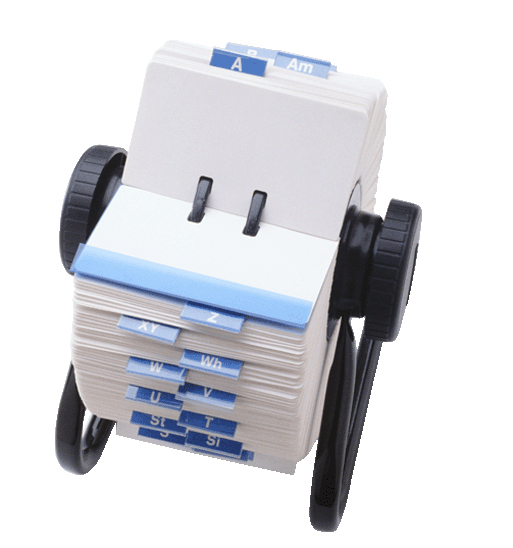
Forget About The Rolodex When Talking CRM
Many of the CRM implementations I’ve been involved in over the years were about setting up a huge, centralized Rolodex. Dozens of shoe boxes filled with business cards used by individual employees, Access databases of several departments, zillions of spreadsheets… they all had to be crammed into a brand new, preferably web-based CRM system. And because this CRM system was integrated with Outlook, and its interface looked familiar and simple, this fantastic new system was always expected to be accepted by the users immediately; that everyone would really start using it from day one.
As you might imagine, this was never the case. Because entering the details of your own business contacts also implies sharing them with other users. And can you trust your colleagues with your contacts? They might try to ‘steal’ your customers, or serve them with less attention than you’ve always done. They might even alienate your contacts by spamming them through the sophisticated email marketing functionality of this new CRM system… Obviously, a lot of behavioral change needs to happen before users will actually start using the new system. Even more so, because these hesitant users always seem to find ways to secretly keep a copy of that good old shoe box in their bottom drawers…
User Pressure
So CRM users either need to be forced to use the system, for instance by including the use in job their descriptions, or reward them by means of on target earnings (like a bonus). In some organizations, however, the management does not really have the power to enforce a way of working and tries to convince users of the benefits of the CRM system. These benefits might include ‘Gaining Profit’: You share your contacts, and in return you get access to the contacts of your colleagues. ‘See the Customer Upside’: Understanding that the customer really doesn’t want to be contacted several times a day by the same organization, or ‘Gaining Status’: Where users get rewarded and visibly awarded by actually using the system, for instance with the use of a gamification methods.
You could also just fire everyone that doesn’t use the CRM system, but a more subtle way of enforcing the use is adding functions that support core operational processes. If you have to go through the CRM system to get vital information like stock supplies, you will start to use other functions of the system too. If the only way to enter a customer order is to login to the CRM system, you’ll have to use it… In my experience, systems that are just set up to be digital Rolodexes, will never be used successfully and keep on giving CRM a bad name.
Who ‘Owns’ The Data?
Then there’s data sharing in the cloud. Let’s face it, when you are entering your business contacts into the CRM system, aren’t you just copying the Yellow Pages? Yellow Page data is available as a web service today, which can easily be integrated in your CRM system, so you make sure the most up-to-date contact data is always available. And if you really think about that: there is so much data available in the cloud today… If we all would change our mindset and stop thinking that companies should ‘protect’ their customer data in their CRM system. In today’s world customers maintain their own data in the cloud and give access to the organizations of their choice. You’ll have to admit that this changes everything for CRM as we know it today.
So, when implementing CRM systems from now on, completely forget the Rolodex. Don’t bother about profile data. If you are a true business partner for your customers they will definitely be willing to grant you access to their contact profile. Just concentrate on recording and planning the touch points and contact moments you have with your customers. Look at the journey a customer makes to do business with you. Use your CRM to make this journey as easy as possible and identify the road blocks by recording customer experience data in your CRM system. Eliminate obstacles. Integrate your web care efforts, like monitoring Twitter feeds, into your operational CRM system. Use the (big) data available all over the web to conduct predictive analyses on the behavior and demands of your customers. But please… forget about the Rolodex when talking CRM!
 Next Post
Next Post
Great blog! Just the way I see it too!